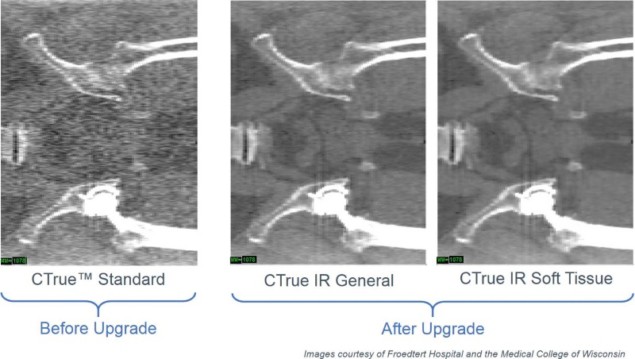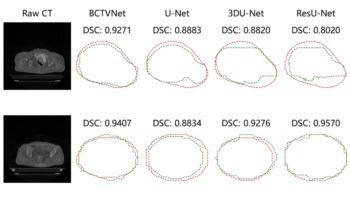
The ESTRO 37 meeting in Barcelona saw Accuray unveil a range of product advancements, including the launch of CTrue IR, an iterative reconstruction algorithm currently available on the Radixact System, which provides image-guided, intensity-modulated radiotherapy.
The Radixact treatment device encompasses integrated 3D volumetric imaging, using low-dose fan-beam CT images for daily set-up and registration. The system also offers Delivery Analysis software that leverages the same integrated detector to perform pre-treatment dose calculations and post-treatment analysis of exit fluence through the patient for every fraction, and generates warnings if any parameters fall outside of clinically acceptable windows.
The new image-guidance software can reconstruct these CT fan-beam scans with enhanced image quality, while maintaining a low imaging dose and the ability to perform live reconstruction as the images are acquired. The main benefit of iterative reconstruction is the much improved signal-to-noise ratio, which in turn increases the soft-tissue contrast.
“Iterative reconstruction reduces the noise by over a factor of two and helps improve image uniformity,” explained Accuray’s Andrea Cox. “It particularly enhances images in the superior-inferior direction, so that the slice transitions are less visible, and improves soft-tissue visibility in all image planes.”
The CTrue IR software is now installed at three customer sites, one in Europe and two in the US, with the first clinical images recorded just a couple of weeks ago. Cox described one of the first clinical test cases that used the new software release – an obese patient with a hip prosthesis.
Such a case could result in a sub-optimal CT scan, due to photon starvation artefacts (which occur due to photon attenuation through obese patients) and metal artefacts arising from the prosthesis. Using the CTrue imaging system with the new iterative reconstruction capability, the image exhibited excellent uniformity, with no problem with artefacts.
“The first customer to use this software found much improved image uniformity,” said Cox. “The therapists are more confident now in the positioning of the patient, they’re really happy with it.”



